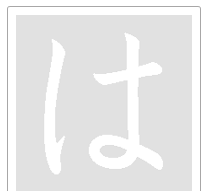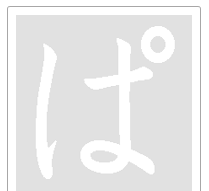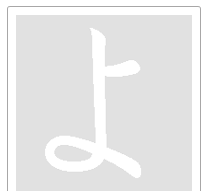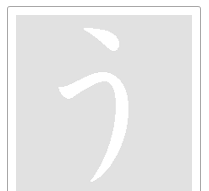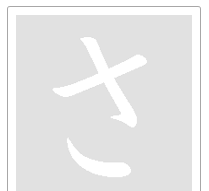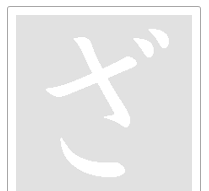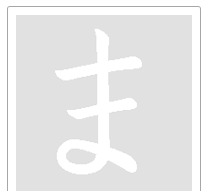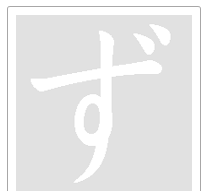 |
||||
 |
||||
Hiragana-1 First, you will learn the following 6 characters: |
||||||||||||||||||||
| お o
This is how to draw the character お. It is composed of three discrete strokes.
お is the hiragana equivalent to オ in katakana, and is therefore pronounced o. Now, write the character in the window below. |
|
|||||||||||||||||||
| は ha
This is how to draw the character は. It is composed of three strokes.
は corresponds to ハ in katakana, and is read ha, in principle. Just as katakana, addition of a little circle makes it ぱ, i.e. pa, and two dots make it ば, i.e. ba. Now, write the character in the window below. |
|
|||||||||||||||||||
| ぱ pa
This is how to draw the character ぱ. It is composed of four strokes.
Now, write the character in the window below.
|
|
|||||||||||||||||||
|
ば ba
This is how to draw the character ば. It is composed of five strokes.
Your PC should support Japanese characters. |
|
|||||||||||||||||||
|
よ yo
This is how to draw the character よ. It is composed of two strokes.
よ represents yo, and is therefore equivalent to ヨ in katakana. Now, write the character in the window below. |
|
|||||||||||||||||||
| う u
This is how to draw the character う. It is composed of two strokes.
う is basically read as u (like ウ in katakana). The pronunciation of う, however, often changes into o. This is affected by the preceding o-comprising sound. Thus, while おはよう should be read as o ha yo u, i.e. ohayou, it is actually pronounced as ohayoo as you already know. The u sound is affected by the yo sound, and functions as an elongation of the o sound. Now, write おはよう
in the
window below. |
|
|||||||||||||||||||
| Next, you will learn the following 8 characters: | ||||||||||||||||||||
| こ ko
This is how to draw the character こ. It is composed of two strokes.
こ is equivalent to コ in katakana, and therefore is read as ko. |
|
|||||||||||||||||||
| ご go
This is how to draw the character ご. It is composed of four strokes.
So, just like katakana, addition of two dots, i.e. ご, the sound is voiced. Hence, ごrepresents the sound, go. |
|
|||||||||||||||||||
| さ sa
This is how to draw the character さ. It is composed of three strokes.
|
|
|||||||||||||||||||
| ざ za
This is how to draw the character ざ. It is composed of three strokes.
さ is the hiragana equivalent to サ, so it reads sa. With two dots, therefore, ざ is read as za. |
|
|||||||||||||||||||
| い i
This is how to draw the character い. It is composed of two strokes.
い represents the i sound, equivalent to イ in katakana.
|
|
|||||||||||||||||||
| ま ma
This is how to draw the character ま. It is composed of three strokes.
|
|
|||||||||||||||||||
| す su
This is how to draw the character す. It is composed of two strokes.
す represents the su sound, equivalent to ス in katakana.
|
|
|||||||||||||||||||
| ず zu
This is how to draw the character ず. It is composed of two strokes.
す represents the su sound, equivalent to ス in katakana. So, addition of two dots makes it ず, i.e. zu. Thus, altogether ございます stands for gozaimasu. Hence, おはようございます is the Japanese writing for ohayoo gozaimasu. Now, write
おはようございます
in the
window below. |
|
|||||||||||||||||||
 |
||||||||||||||||||||



